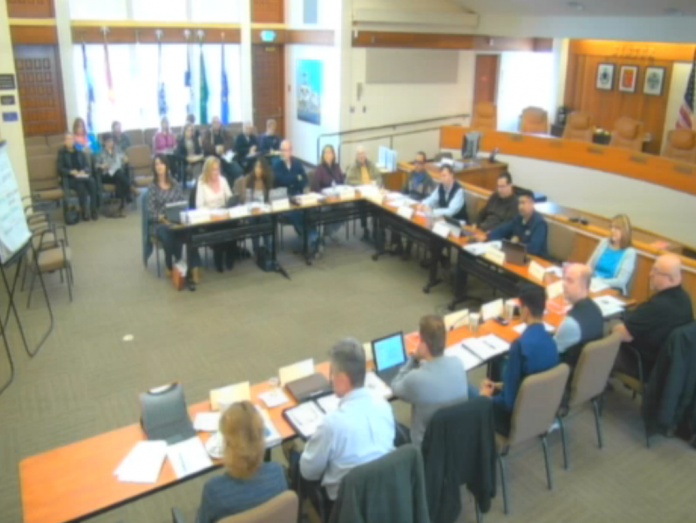Upgrading the city’s aging IT infrastructure and keeping Gilroy on sound fiscal footing in the face of growing budget pressures were two of city council’s top stated priorities for the next two-to-three years, as discussed on Saturday during the council’s annual goal-setting retreat.
Over six hours, city leaders, with input from members of the public and community groups, developed a strategic plan for city hall that included everything from exploring new art center funding and updating the city’s stance on cannabis in light of the passage of Prop.64 to downtown beautification, but it was the city’s inefficient technology and fiscal pressures that rose to the top of the list for many council members.
“There are an awful lot of high priority financial demands on the city,” said councilman Paul Kloecker. IT upgrades including new hardware and software across multiple departments could run to $2 million.
“Certainly our biggest priority is updating the city’s IT infrastructure,” said city councilman Peter Leroe-Munoz. “Hardware and software upgrades, and staff training. We also need to make sure our system and software is secure from cyber attacks. The city is dealing with residents’ most valuable information when they pay a bill or sign up their kids for a recreation program.”
There are also unfunded pension liabilities, street repairs, and fallout from the Urban Growth Boundary that restricts growth and will put a dent in the amount of developer fees the city collects.
Leroe-Munoz said it was critical the city get a handle on traffic relief and its backlog of road repairs.
“We need to ensure we allocate money appropriate to fix and maintain our roads. It’s a hidden tax on our residents.”
Kloecker is also worried about revenue threats from the federal government, including possible loss of funding for High Speed Rail and Caltrain electrification due to recent actions by California Republican legislators.
As reported by the San Francisco Chronicle, Republican congressman have asked the Trump administration for an audit of the High Speed Rail project before $647 million in federal funding for Caltrain electrification is released to the state.
The high-speed train, which will stop at a station either in Gilroy’s downtown or east of the Outlets, is designed to run on electrified Caltrain tracks between San Francisco and San Jose, so any risk to that project’s funding puts high speed rail in jeopardy.
Councilman Dan Harney said Gilroy should look at diversifying city revenues and its reliance on sales tax revenue from retail.
Sales tax revenue is the most significant revenue source to the City of Gilroy’s general fund, representing nearly half of general fund tax revenues, according to finance director Jimmy Forbis.
For 2016 fiscal year, ending June 30, Gilroy’s sales tax revenue was $17.9 million, about $500,000 above projections.
Auto dealers, downtown and the two Camino Arroyo retail centers were up for the quarter and the year, according to Forbis, whereas sales tax revenue from the Gilroy Premium Outlets has been trending down for the past five quarters.
Taking advantage of its location and connection to agriculture, councilman Peter Leroe-Munoz, who is the Vice President of Technology & Innovation Policy at Silicon Valley Leadership Group, said Gilroy should look at AgTech for new business development.
“We have the proximity to Silicon Valley and access to agricultural resources that Cupertino and Mountain View doesn’t have.”
Some on the council suggested creating a new in-house economic development position that would help bring new industries to the city.
Most of that outreach is currently done by the Gilroy Economic Development Corporation and Mayor Roland Velasco said the council would need to be clear on how that role would interact with internal processes and the EDC. The topic will be discussed at upcoming budget talks.
As Gilroy looks to a restricted growth landscape over the next 20 years due to the November passage of Measure H – the urban growth boundary initiative, the city needs to do better at identifying development opportunities within city limits and reviewing potentially deal-killing regulatory obstacles.
During a later interview, Velasco referred to commercial lots near 10th street and First Street near Kern Avenue that have remained vacant because of a backlog of development projects that make it cost-prohibitive for would-be buyers.
“There are a lot of conditions put [on those parcels],” he said. “We want to get a better understanding of what those conditions are.”













